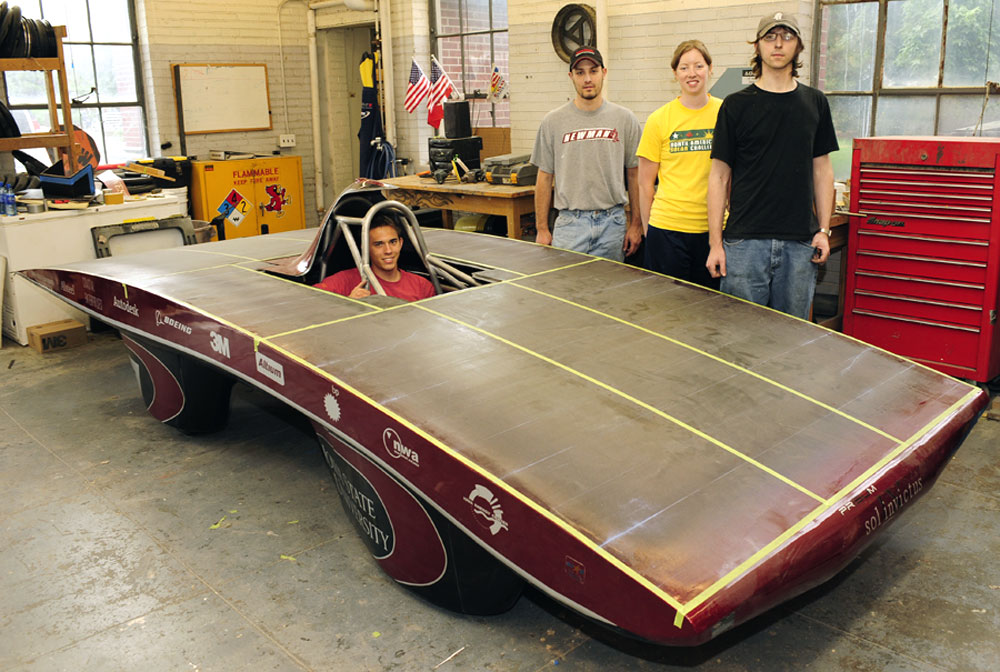Sol Invictus, Iowa State University's student-designed and student-built solar race car, is getting ready to compete in the North American Solar Challenge July 13-22.
The challenge will take 24 student-designed and student-built solar race cars from Plano, Texas, to Calgary, Alberta, Canada. They’ll make the 2,400-mile run July 13-22, with a checkpoint in Omaha, Neb., July 15-16 and a stage stop in Sioux Falls, S.D., July 16-18. The route between those cities takes the solar cars into western Iowa for a few hours.
Team PrISUm did very well in 2005, the last time the challenge was contested. The Iowa State car made it from Austin, Texas, to Calgary in 71.5 hours. That was good for a third place finish in the challenge’s stock class and 11th overall against cars in the more powerful open class.

This year’s team is feeling good about the latest solar car, a car dubbed “Sol Invictus,” the Unconquered Sun.
“I think we’re going to do this,” said Sarah Kelly, a senior mechanical engineering major from Rochester, Minn., and the team’s project director. “It’s going to be hard for the next week and a half. Everyone knows that.”
Building this year’s race car has been a challenge because organizers changed the car’s specifications in an effort to improve safety. And there have been some delays getting parts and components back from suppliers and fabricators.
“We’re all working really hard,” Kelly said. “Our mechanical team has to keep plugging away. When they finish, the electrical team has a lot to do.”
Johanns, a senior from Mason City who’s majoring in aerospace engineering, said the project has certainly kept him busy. But that’s OK, he said, because, “I get to play with carbon fiber every day.”
Sol Invictus’ shell is made of the super-light, super-strong composite material.
Yes, he said, working on the solar car has taught him a few lessons in engineering. He now knows the proper way to lay up carbon fiber. He knows more about how a vehicle’s suspension keeps the tires on the road. He’s applying his interest in motorsports and aerodynamic design to a very hands-on project. He’s also learned how engineers can work together as a team. And he thinks Iowa State’s team has come up with a car that can compete. “With the size of the solar array we have, and without a huge increase in weight, I think we’ll do well,” he said.
Matt Martin, a junior from Rochester, Minn., who’s studying aerospace engineering and will be one of the car’s primary drivers, has been working with the team since early in his freshman year. He’s glad to see the team so close to getting its car on the road. “It’s exciting,” he said. “It’s fun seeing something like this come together just because there are so many aspects and so many disciplines involved. To see it all coming together is really rewarding.”
And while there’s still work to do, “I’m proud of what we’ve done,” Martin said. “We’ve all learned a lot and we’ve all added to engineering’s knowledge of solar cars. Really, the work has been done. Now we’ll run the cars to see which car wins.”





Comments